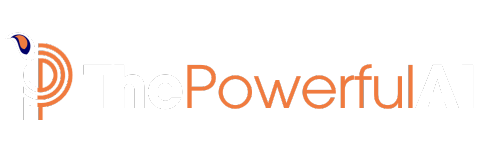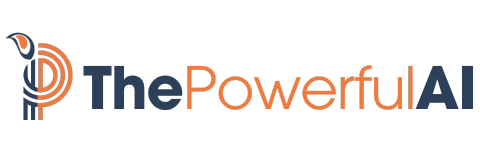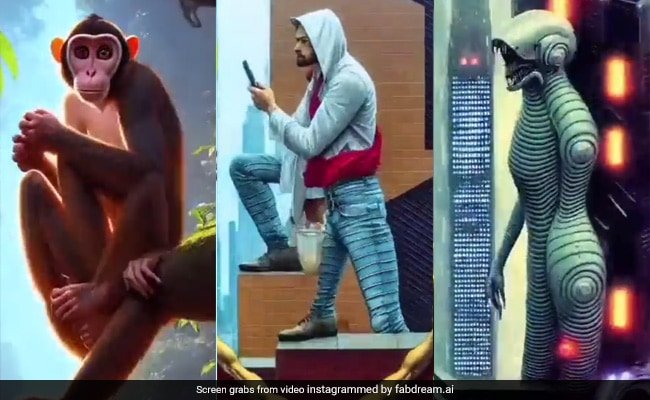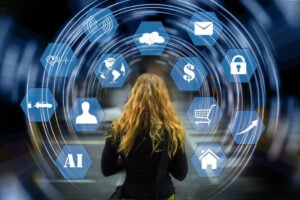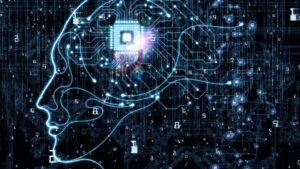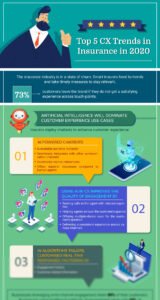Artificial intelligence creates human evolution artwork by imitating and generating images based on data it has been trained on. However, AI art lacks the emotional connection and personal touch that human art possesses, making it less meaningful and impactful.
While AI may continue to advance, it is highly unlikely that it will replace human artists completely, as the human touch, emotional intelligence, and personal experiences that artists bring to their work are invaluable and cannot be replicated by AI.
AI can imitate existing art and recreate it in another format, but it is not considered original art. Additionally, AI-generated art lacks the creative process and human element that defines human artwork.
Benefits Of Artificial Intelligence
Artificial Intelligence creates human evolution artwork, showcasing the benefits it brings to the table. With increased productivity and smarter decision-making, AI not only strengthens the economy but also helps in complex problem-solving and disaster management. Additionally, AI-generated art differs from human artwork by lacking the emotional connection and personal touch that make art meaningful and impactful.
While AI may advance, it is unlikely to replace human artists, as the human touch and personal experiences are irreplaceable.
Productivity Increase
Artificial Intelligence (AI) offers a remarkable increase in productivity across various industries. By automating repetitive tasks and streamlining processes, AI allows businesses to optimize their operations and save time and resources. AI-powered tools and algorithms can analyze large volumes of data at lightning speed, generating valuable insights and improving decision-making processes. As a result, companies can focus on more strategic tasks and achieve higher levels of efficiency and productivity.Smarter Decision-making
AI enables smarter decision-making by providing accurate and data-driven insights. Machine learning algorithms can analyze vast amounts of data, identify patterns, and make predictions based on historical trends. This allows organizations to make informed decisions and mitigate risks more effectively. With AI-powered decision support systems, businesses can optimize their strategies, identify new opportunities, and stay ahead of the competition.Complex Problem-solving
AI excels in complex problem-solving scenarios that require advanced data analysis and pattern recognition. Machine learning algorithms can analyze complex datasets and identify hidden relationships and patterns that human analysts may miss. This ability to handle immense amounts of data and identify complex patterns enables AI to tackle complex problems in fields such as finance, healthcare, and research, leading to innovative solutions and advancements in various domains.Economic Impact
The economic impact of AI is significant and far-reaching. AI-powered technologies can drive economic growth by improving productivity, creating new jobs, and enhancing market competitiveness. The automation of repetitive tasks frees up human resources to focus on higher-value activities, leading to increased innovation and economic development. Additionally, AI-driven industries, such as robotics and autonomous vehicles, open up new markets and investment opportunities, fueling economic growth and prosperity.Repetitive Job Automation
AI automation has the ability to transform repetitive and mundane tasks across various industries. From data entry to customer support, AI-powered systems can perform tasks faster, more accurately, and without fatigue. This automation not only increases efficiency but also frees up human workers to focus on more creative and complex tasks that require human intuition and problem-solving abilities. As a result, job satisfaction and productivity levels can soar.Personalisation
With AI, personalization has reached new heights. AI algorithms can analyze vast amounts of customer data to understand individual preferences and behaviors. This enables businesses to offer personalized recommendations, tailored marketing campaigns, and customized products or services. By delivering personalized experiences, companies can enhance customer satisfaction and loyalty, ultimately driving revenue growth.Global Defence Applications
AI has significant potential in global defence applications. From autonomous drones to intelligent surveillance systems, AI can play a critical role in enhancing national security and military operations. AI-powered systems can analyze vast amounts of data in real-time, enabling early threat detection and efficient decision-making. Additionally, AI can assist in mission planning, logistics optimization, and autonomous operations, empowering defense forces with advanced capabilities to address evolving challenges.Disaster Management
AI can greatly aid in disaster management and emergency response. By analyzing data from various sources, including sensors, social media feeds, and satellite imagery, AI algorithms can provide real-time insights into disaster situations. This enables authorities to make timely and informed decisions, allocate resources effectively, and coordinate emergency response efforts. AI-powered tools can also assist in forecasting and predicting natural disasters, helping communities prepare and mitigate potential risks.Difference Between Ai-generated Art And Human Artwork
AI-generated art and human artwork differ in several ways. AI algorithms can only produce images based on the data they have been trained on, resulting in limited creativity and lack of originality. Additionally, AI art lacks the emotional connection and personal touch that human art possesses, making it less meaningful and impactful.
Ai Limitations In Generating Art
AI-generated art has undoubtedly made significant advancements in recent years, capturing the attention and awe of many. However, it is vital to understand the limitations that AI algorithms face when it comes to producing artwork. These limitations are crucial in differentiating AI-generated art from human artwork, as they highlight the unique qualities that only human artists possess.Lack Of Emotional Connection And Personal Touch
One of the primary distinctions between AI-generated art and human artwork is the absence of emotional connection and personal touch in AI creations. Human artists have the innate ability to infuse their emotions and personal experiences into their artwork, making it deeply meaningful and impactful. The passion, sentiment, and authenticity conveyed in human art establish a profound connection between the artist and the viewer, evoking lasting emotions and reactions. On the other hand, AI algorithms can only generate images based on the data they have been trained on. Although they can produce visually stunning and intricate compositions, these AI-created artworks lack the depth and personal touch that human artists bring to their work. This absence of emotional connection and personal touch within AI-generated art diminishes its ability to resonate with individuals on a profound and personal level.Ai Limitations: Recap
To recap, the limitations of AI in generating art can be summarized as follows:- AI algorithms can only produce images based on the data they have been trained on, leading to artwork that is limited to what the algorithm has seen before.
- AI-generated art lacks the emotional connection and personal touch that human artwork possesses, making it less impactful and meaningful.
Will Ai Art Replace Human Art?
Will AI art replace human art?
Unlikelihood Of Complete Replacement
While AI may continue to advance, it is highly unlikely that it will ever completely replace human artists. The human touch, emotional intelligence, and the ability to infuse art with personal experiences are invaluable and cannot be replaced by AI.
AI algorithms can only generate images based on the data they have been trained on, meaning that they can only produce images that are similar to what they have seen before. Additionally, AI art lacks the emotional connection and personal touch that human art has, making it less meaningful and less impactful. The uniqueness and individuality that come with human art cannot be replicated by AI.
Value Of Human Touch And Personal Experiences
One of the main reasons why AI art is unlikely to replace human art is the value of the human touch and personal experiences that human artists bring to their work. Art is a form of expression, and human artists have the ability to infuse their art with their own emotions, experiences, and perspectives.
Every piece of human art is unique and represents a part of the artist’s own journey. Whether it’s a painting, a sculpture, or a piece of music, human art tells a story and evokes emotions in a way that AI art simply cannot.
Furthermore, the human touch in art extends beyond the final product. Many art forms require physical dexterity and skill that cannot be replicated by AI. The process of creating art, the struggle, the passion, and the years of practice that go into honing one’s craft, all contribute to the final piece. AI art lacks this aspect of human perseverance and dedication.
In conclusion, AI art may continue to evolve and have its place in the art world, but it is highly unlikely that it will ever completely replace the value and impact of human art. The human touch, emotional intelligence, and personal experiences that human artists bring to their work cannot be replicated by AI algorithms.
Originality Of Ai-created Art
Artificial Intelligence creates human evolution artwork in Austin, Texas, United States. AI-generated art lacks the emotional connection and personal touch that human art has, making it less meaningful and impactful. While AI art may imitate existing works, it cannot create original art.
Ai’s Ability To Imitate Existing Works
AI technology has made remarkable advancements in recent years, including its ability to imitate existing works of art. Through sophisticated algorithms and machine learning, AI systems are now capable of analyzing large datasets of art and producing remarkably accurate imitations. This ability has raised interesting questions about the originality of AI-created art. While AI algorithms can replicate styles and techniques used by human artists, it is important to consider the source of inspiration for these imitations. AI can only generate art based on the data it has been trained on, limiting its scope to reproducing what it has seen before. One of the key differences between AI-generated art and human artwork lies in the emotional connection and personal touch that human artists bring to their creations. Human art is often deeply rooted in personal experiences, beliefs, and perspectives, making it rich in emotion and meaning. On the other hand, AI art lacks this human touch, resulting in a less personal and impactful experience for the viewer. Moreover, AI-generated art can be seen as a replication rather than an original creation. It regurgitates existing works in a different format, but it does not possess the unique perspective and creative flair that human artists bring to their craft. The debate surrounding the definition of art and creativity further complicates the assessment of AI-created art. Some argue that art should be attributed to human creativity and the ability to express one’s emotions and ideas. They view AI’s replication of existing works as a mere imitation and not true artistic expression. On the other hand, proponents of AI-generated art argue that the process of training the algorithms and the resulting imitations itself can be considered a form of creative expression. They see AI as a tool that enhances and expands artistic possibilities, allowing for the exploration of new styles and techniques. In conclusion, while AI has shown remarkable abilities in imitating existing works of art, the originality and emotional depth of AI-created art are still subject to debate. It is important to recognize the limitations of AI algorithms in generating truly original and meaningful artwork. Human art, with its personal touch and unique perspectives, continues to hold a special place in the creative world. AI art may complement human art, but it is unlikely to completely replace the creativity and emotion that human artists bring to their craft.Ai-generated Art Portraying Human Evolution
Artificial Intelligence (AI) has revolutionized various industries, including the field of art. AI-generated art has emerged as a unique blend of technology and creativity, with artists and tech enthusiasts exploring the vast possibilities it offers. One intriguing aspect of AI-generated art is its ability to portray human evolution in visually captivating ways. Through the use of algorithms and machine learning, AI artists have created videos that depict the progression of human evolution.
Ai Artist’s Video Of Human Evolution
An AI artist has recently created a mesmerizing video that visualizes the concept of human evolution. This video takes the viewers on a journey through time, showcasing our transformation from primitive beings to highly advanced beings. The AI algorithms analyze vast amounts of historical and scientific data to create accurate and realistic representations of different stages of human development. With stunning visuals and intricate details, this video provides a unique perspective on the concept of human evolution.
Impact And Viral Nature Of The Video
The AI-generated video depicting human evolution has quickly gained popularity and has become viral on various platforms. Its captivating visuals and thought-provoking nature have sparked curiosity and intrigue among viewers worldwide. As people share and discuss the video, it stimulates conversations about the past, present, and future of human existence. The viral nature of the video highlights the power of AI-generated art to engage and captivate audiences, transcending traditional boundaries.

Credit: www.science.org
Implications Of Ai In Human Evolution
Artificial intelligence (AI) is revolutionizing the art world, creating artwork that reflects human evolution. While AI can mimic existing art, it lacks the emotional connection and personal touch of human artists. It is unlikely that AI will ever fully replace human art, as the human touch and personal experiences that artists infuse into their work are irreplaceable.
AI is changing the art landscape but cannot replicate the creativity and uniqueness of human artists.
Speculations On The Future Of Human Evolution
As the field of Artificial Intelligence continues to advance at a remarkable pace, the implications for human evolution are beginning to emerge. With AI’s ability to mimic and replicate human intelligence, it raises intriguing questions about what the future holds for our species. Speculating on the future of human evolution in the presence of AI brings forth various possibilities and considerations. One speculation is that AI could potentially enhance human capabilities, leading to a new breed of augmented individuals. Imagine a future where humans have the ability to enhance their intelligence, memory, and physical attributes through AI-driven technologies. This could result in a more efficient workforce, improved problem-solving skills, and the ability to process information at unprecedented speeds. Another speculation is the integration of AI into the human body, creating a symbiotic relationship. This could involve neural interfaces or the merging of organic and artificial components. The result could be a hybrid human-AI being, capable of leveraging AI’s processing power while retaining the emotional intelligence and creativity that define us as humans.Concerns And Reflections On Ai’s Role In Shaping Humanity
While the potential benefits of AI in human evolution are immense, it is essential to have a critical examination of the concerns and reflections surrounding its role in shaping humanity. There are ethical considerations that need to be addressed, as well as concerns about the displacement of human labor and the potential for AI to surpass human intelligence. One concern is the possible loss of human creativity and the artistic process. Although AI is capable of generating artwork that closely resembles human-created pieces, it lacks the emotional connection and personal touch that make art meaningful. The unique perspective, experiences, and emotions that human artists bring to their work cannot easily be replicated by AI. Furthermore, there are ongoing debates about the impact of AI on employment. While AI can automate repetitive tasks and streamline operations, it also raises concerns about job displacement. This underscores the importance of reevaluating the concept of work in a world driven by AI, ensuring that humans are not left behind and that opportunities for personal growth and fulfillment remain accessible. In conclusion, the implications of AI in human evolution are both exciting and complex. Speculating on the future of human evolution in the presence of AI opens up a whole new realm of possibilities, from enhanced capabilities to the integration of AI into the human body. However, it is crucial to address concerns and reflect on the role of AI in shaping humanity, ensuring that ethical considerations, creativity, and employment opportunities are not compromised. The evolution of humans in the age of AI holds immense potential, and it is vital that we navigate this transformative journey responsibly and thoughtfully.Frequently Asked Questions For Artificial Intelligence Creates Human Evolution Artwork And
What Are The 5 Benefits Of Artificial Intelligence?
Artificial intelligence (AI) offers several benefits including increased productivity, smarter decision-making, complex problem-solving, a strong economy, and the management of repetitive tasks.
What Is The Difference Between Ai-generated Art And Human Artwork?
AI-generated art is created by algorithms that can only produce images based on the data they have been trained on. It lacks the emotional connection and personal touch that human art has, making it less meaningful and impactful. It is highly unlikely that AI will replace human artists, as the human touch and personal experiences cannot be replicated by AI.
AI art imitates existing works, but it is not considered original art.
Will Ai Art Replace Human Art?
AI art will not replace human art as it lacks the personal touch and emotional connection that human art provides. AI can only generate images based on existing data and cannot replicate the unique experiences and perspectives of human artists.
Does Ai Create Original Art?
AI algorithms can generate art, but it is not considered original as they can only imitate existing creations. AI art lacks the emotional connection and personal touch of human art, making it less meaningful and impactful. AI will unlikely replace human artists as the human touch and personal experiences are invaluable in art creation.
Conclusion
In the world of art, the emergence of Artificial Intelligence (AI) has brought forth a new era of creativity and innovation. AI-generated artwork has shown promising results, with impressive productivity, smarter decision-making, and complex problem-solving capabilities. However, AI art still falls short in terms of emotional connection and the personal touch that human artwork possesses.
While AI may continue to evolve, it is unlikely to completely replace human artists, as their unique ability to infuse art with personal experiences is unparalleled. AI and human art can coexist, each offering its own distinct value to the world of creativity.
